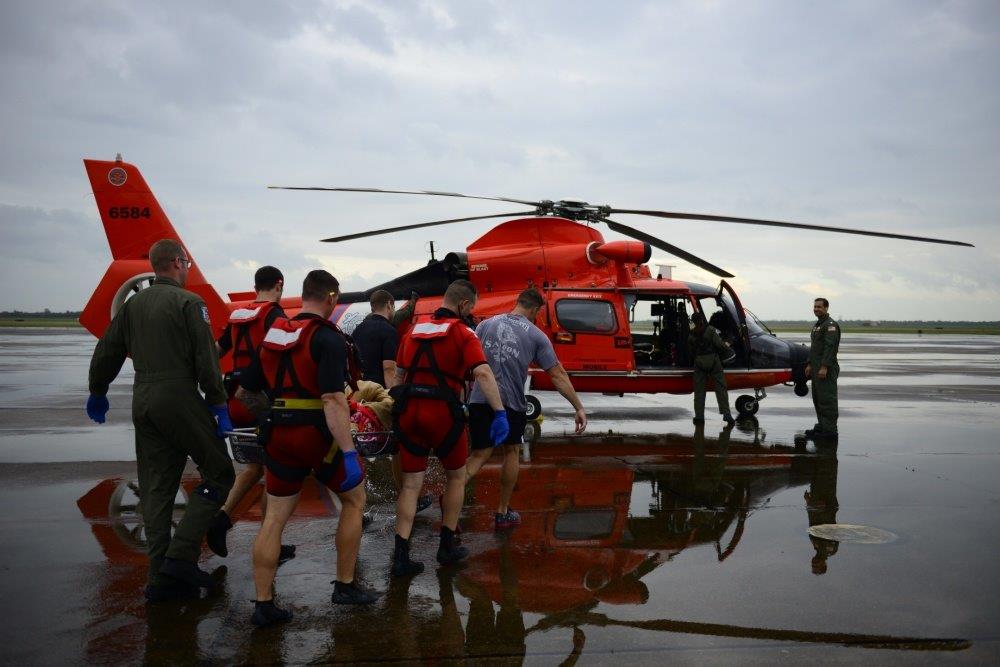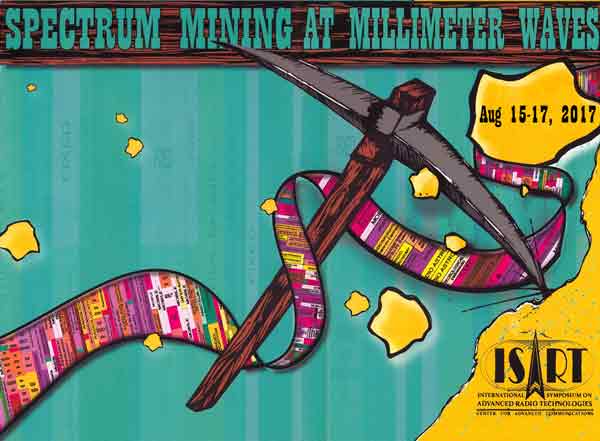NTIA Blog
ITS Research Offers New Avenues for Improving Speech Recognition in Wireless Communications
Noise is one of the more vexing communications issues first responders face during emergencies. Emergency scenes are often loud and chaotic, and responders must compete with background noise — sirens, yelling, a roaring fire, severe weather and more — when trying to communicate with the command center and each other.
Improving over-the-air transmissions so that essential verbal communications can be heard above background noise is part of the goal of signal processing, a decades-long specialty of NTIA’s research laboratory, the Institute for Telecommunication Sciences (ITS). This week, ITS is presenting research that offers new avenues for addressing speech separation problems while enabling more efficient use of spectrum. The research could lead to solutions that produce higher speech quality, better speech intelligibility and less distorted sound — while using less bandwidth.
How NTIA Ensures Responders Can Communicate During Hurricane Recovery Efforts

Source: United States Coast Guard
The devastation of Hurricanes Harvey, Irma and Maria over the past few weeks triggered a massive response from emergency responders. Thousands of federal personnel have been deployed to the Gulf Coast, Florida, and the Caribbean, including National Guard troops, the Coast Guard and Federal Emergency Management Agency staff, mounting search-and-rescue missions and delivering emergency supplies of food and fresh water.
NTIA’s role in these efforts is ensuring that these responders can communicate with each other and with the various state and local agencies on the ground. After Hurricane Harvey, NTIA’s Scott Jackson and Ron Snider flew to Camp Mabry, Texas, where the Texas Department of Public Safety had set up a command post for its Communications Coordination Group. Jackson heads the Emergency Response Team for NTIA’s Office of Spectrum Management (OSM), and Snider is a telecommunications specialist in OSM and also a member of the Emergency Response Team.
Three Papers Using NTIA Data to be Presented at Research Conference
Annual Spectrum Symposium Will Examine Millimeter Waves

Spectrum capacity discussions have often focused on the lower frequency bands (below about 6 GHz) because those signals are able to travel significant distances without being interrupted by environmental factors. But these lower frequency bands do have a drawback for wireless transmission in a data-hungry age – available bandwidth is limited.
Until recently, higher frequencies were not considered useful for outdoor transmissions, since their signals are susceptible to propagation loss in bad weather and can’t travel through buildings. However, advances in technology are beginning to unlock their potential.
Higher radio frequencies, from roughly 20 to 300 GHz, are considered promising spectrum for the next generation of wireless technologies, including 5G. Attention is particularly concentrated on the millimeter wave (mmWave) or Extremely High Frequency (EHF) bands, 30–300 GHz. The bandwidth available in the millimeter wave frequency range could increase the speed of cellular Internet service by more than ten times.
NTIA Celebrates Vital Role of Digital Inclusion Programs
This week, NTIA is joining communities, organizations and broadband advocates in recognizing Digital Inclusion Week and the important work being done by digital inclusion programs across the country.
The concept of digital inclusion goes beyond ensuring that everyone in the United States has access to the Internet -- it reflects the understanding that people require robust broadband connections, connected devices that meet their needs, and the skills to explore, create, and collaborate in the digital world.
Community leaders, universities, libraries, nonprofit groups and others are working together on digital inclusion programs that connect citizens and inform them about the tremendous number of economic, educational and entertainment benefits that computer use can provide. There are endless examples of these kinds of programs, including “learn to code” classes, workforce skills programs, and training for seniors so they can seek out health information online.
NTIA’s BroadbandUSA program offers guidance, assistance and resources to help build the capacity of digital inclusion programs. A few highlights:
ITS Releases Key Software Model to Boost Collaborative Spectrum-Sharing Research
Evolving and improving the science behind spectrum sharing is essential to NTIA’s commitment to delivering the spectrum needed to support innovation, power next-generation technologies and ensure that federal agencies can execute their spectrum-dependent missions.
Understanding the characteristics of radio waves, especially how far they propagate and how they interact with structures and the environment, is important in planning and operating wireless systems. Any agreement to share spectrum bands will require reliable predictions of how that spectrum will perform in the real world.
The Institute for Telecommunication Sciences (ITS) recently took a major step toward a more collaborative approach to research in this area by publicly releasing an advanced software model for radio wave propagation in urban environments. This software can be used by consumers, engineers, scientists and others to explore the behavior of radio waves interacting with buildings, trees, and other environmental features.
ITS released the software to the public by publishing source code on GitHub, an online platform for open-source code. Posting to GitHub will allow researchers to use and modify the code as they wish, as well as collaborate with other researchers and avoid duplicating efforts. ITS hopes that making its source code freely available can advance development of widely accepted propagation models.
Agencies Making Progress to Connect America
Over the last eight years, our agencies have worked to expand the availability and adoption of broadband in recognition of the increasingly important role that the Internet is playing in every facet of society.
Recognizing the opportunity to marshal resources across the entire federal government, President Obama in March 2015 created the Broadband Opportunity Council, co-chaired by the Secretaries of Agriculture and Commerce, which in August 2015 identified a series of executive actions that could be taken through existing agency programs, missions, and budgets to increase broadband deployment, competition, and adoption.
Today, we are pleased to report that the 25 participating agencies have made considerable progress toward completing their commitments. These actions further the goals of modernizing federal programs to expand program support for broadband investments; empowering communities with tools and resources to attract broadband investment and promote meaningful use; promoting increased broadband deployment and competition through expanded access to federal assets; and improving data collection, analysis, and research on broadband.
Building Our Next Internet Use Survey
Improving Cybersecurity Through Enhanced Vulnerability Disclosure
Stakeholders involved in NTIA’s cybersecurity multistakeholder process to promote collaboration on vulnerability research disclosure today are releasing initial findings, recommendations, and resources that they hope will enhance cooperation and lead to a more secure digital ecosystem. The three stakeholder-drafted reports reflect the experience and wisdom of many of the key experts in the field, including active security researchers, experienced software companies, security companies, academics, and civil society advocates, as well as industries new to the issue.
Vulnerability disclosure has long been an open, important issue in cybersecurity. Companies need a strategy to deal with flawed software, systems, and configurations -- especially when the issues are first discovered by a third party. Without a strategy, for example, companies sometimes choose to threaten the third party with legal action rather than working together to fix the vulnerability. This need is heightened as more and more organizations become part of the digital economy.
A diverse set of stakeholders participated in this process for more than a year, attending four in-person meetings across the country, and participating in countless conference calls and drafting sessions. On behalf of NTIA, I want to thank them for their hard work and dedication to seeking consensus and increased collaboration on these important cybersecurity issues.
Sizing up Spectrum Sharing Prospects
NTIA today is announcing the development of another tool to help meet the surging demand for spectrum from industry and government agencies. It also is the latest demonstration of the Obama Administration’s ongoing commitment to make spectrum available for wireless broadband.
As directed by President Obama in a 2013 Memorandum, NTIA is releasing the Quantitative Assessments of Spectrum Usage that summarizes our initial efforts to evaluate a range of federal spectrum bands for possible sharing with commercial users. These efforts will provide a basis for further detailed studies of potential sharing scenarios.
